- Privacy Policy

Home » Figures in Research Paper – Examples and Guide

Figures in Research Paper – Examples and Guide
Table of Contents
Figures in research papers are essential visual elements that enhance the presentation of data, summarize complex information, and clarify findings. Whether it’s a graph, chart, image, or diagram, figures help readers quickly interpret and understand the results and key points of a study. This article explores the role of figures in research papers, provides examples, and offers a comprehensive guide for creating effective figures.

Figures in Research Paper
Figures in research papers refer to graphical or visual representations of information, data, or concepts. They are designed to complement the text by presenting information in an easily digestible and visually appealing format. Common types of figures include charts, graphs, photographs, illustrations, and flowcharts.
Examples of Figures in Research Paper
Examples of Figures in Research Papers or Thesis are as follows:
Line graphs Example

Bar graphs Example

Pie charts Example

Scatterplots Example

Tables Example

Photographs or images Example

Diagrams or schematics Example

Purpose of Figures in Research Papers
- Simplify Complex Data : Figures condense large datasets into easily interpretable visuals.
- Enhance Clarity : They help explain concepts or processes that are difficult to describe in words.
- Engage Readers : Visual elements capture attention and make the paper more engaging.
- Highlight Key Findings : Figures emphasize critical results or relationships.
- Support the Narrative : They provide evidence to back up claims made in the text.
Key Components of Figures
To ensure clarity and usability, figures must include the following elements:
- Example : “Figure 1: Annual Growth Rate of Renewable Energy Adoption (2015–2020).”
- Example : “X-Axis: Time (years), Y-Axis: Revenue (in millions).”
- Example : Red bars for 2020 data, blue bars for 2021 data.
- Example : “Source: World Bank Data 2022.”
- Caption : A brief description providing context or additional information about the figure.
- Example : “Figure 2.”
Guide to Using Figures in Research Papers
Step 1: determine the need for figures.
Evaluate whether a figure will improve the clarity or impact of your paper. Use figures to:
- Summarize key data or findings.
- Show relationships between variables.
- Explain processes or workflows.
Step 2: Choose the Right Type of Figure
Select a figure type that best conveys your data or concept:
- Line Graph : Trends over time.
- Bar Graph : Comparisons between groups.
- Scatter Plot : Relationships or correlations between variables.
- Flowchart : Step-by-step processes or decision trees.
Step 3: Design Figures for Clarity
Follow best practices for figure design:
- Use simple and clean visuals.
- Avoid clutter by limiting data points and excessive text.
- Use consistent fonts, colors, and styles across figures.
Step 4: Integrate Figures with the Text
Mention each figure in the main text and explain its relevance. Avoid simply restating what the figure shows; instead, interpret and analyze the data.
- Example in Text : “As shown in Figure 3, the adoption rate of renewable energy increased significantly between 2015 and 2020, particularly in developed countries.”
Step 5: Adhere to Formatting Guidelines
Follow the specific formatting requirements of your journal or citation style (e.g., APA, MLA, or Chicago). Common guidelines include:
- Position figures close to the relevant text.
- Include captions and numbering.
- Ensure high-quality resolution for digital figures.
Step 6: Cite Data Sources
If the figure uses data from external sources, provide proper attribution in the caption or reference list.
Step 7: Use Tools for Figure Creation
Leverage tools to create professional and accurate figures:
- Microsoft Excel : For graphs and charts.
- Tableau : For interactive and advanced data visualizations.
- R and Python : For customized plots and statistical visualizations.
- Canva : For flowcharts and infographics.
Common Mistakes to Avoid
- Overloading Figures : Too much data or detail can confuse readers. Simplify wherever possible.
- Inconsistent Design : Use uniform styles for fonts, colors, and labels across figures.
- Missing Context : Ensure captions provide enough information for standalone understanding.
- Poor Quality : Low-resolution images or graphs can reduce the paper’s credibility.
- Ignoring Guidelines : Failing to follow journal or style-specific formatting rules.
Figures are an invaluable component of research papers, transforming data into visually engaging formats that enhance comprehension and impact. By choosing the appropriate type of figure, following best practices for design, and adhering to formatting standards, researchers can effectively communicate their findings. Whether presenting trends, relationships, or processes, figures make research more accessible and impactful.
- American Psychological Association (2020). Publication Manual of the American Psychological Association (7th ed.). APA.
- Tufte, E. R. (2001). The Visual Display of Quantitative Information . Graphics Press.
- Knaflic, C. N. (2015). Storytelling with Data: A Data Visualization Guide for Business Professionals . Wiley.
- Cleveland, W. S. (1994). The Elements of Graphing Data . Hobart Press.
- Microsoft (2024). “Using Excel for Data Visualization.” Microsoft Corporation.
About the author
Muhammad Hassan
Researcher, Academic Writer, Web developer
You may also like

Research Results Section – Writing Guide and...

Tables in Research Paper – Types, Creating Guide...

Research Paper Format – Types, Examples and...

Research Summary – Structure, Examples and...

Informed Consent in Research – Types, Templates...

Conceptual Framework – Types, Methodology and...
An official website of the United States government
Official websites use .gov A .gov website belongs to an official government organization in the United States.
Secure .gov websites use HTTPS A lock ( Lock Locked padlock icon ) or https:// means you've safely connected to the .gov website. Share sensitive information only on official, secure websites.
- Publications
- Account settings
- Advanced Search
- Journal List
The Effective Use of Graphs
David j slutsky , md.
- Author information
- Copyright and License information
Address for correspondence David J. Slutsky, MD The Hand and Wrist Institute, 2808 Columbia Street, Torrance, CA 90503, Email: [email protected]
Graphs are a common method to visually illustrate relationships in the data. The purpose of a graph is to present data that are too numerous or complicated to be described adequately in the text and in less space. Do not, however, use graphs for small amounts of data that could be conveyed succinctly in a sentence. Likewise, do not reiterate the data in the text since it defeats the purpose of using a graph. If the data shows pronounced trends or reveals relations between variables, a graph should be used. If the data doesn't show any significant trend in the evidence, a graph is not the figure of choice. 1
Although there are myriad computer programs that can generate a graph, the author must still heed some basic principles. A basic requirement for a graph is that it is clear and readable. This is determined not only by the font size and symbols but by the type of graph itself. It is important to provide a clear and descriptive legend for each graph. Graphs may have several parts, depending on their format: (1) a figure number, (2) a caption (not a title), (3) a headnote, (4) a data field, (5) axes and scales, (6) symbols, (7) legends, and (8) a credit or source line. For most purposes, design a graph so that the vertical axis (ordinate, Y axis) represents the dependent variable and the horizontal axis (abscissa, X axis) represents the independent variable. Hence, time is always on the X axis. 2 Graphs should always have at minimum a caption, axes and scales, symbols, and a data field. Plotting symbols need to be distinct, legible, and provide good contrast between the figure in the foreground and the background. Open and closed circles provide the best contrast and are more effective than the combination of open circles and open squares. 3 Like the title of the paper itself, each legend should concisely convey as much information as possible about what the graph tells the reader, but it should not provide a summary or interpretation of the results or experimental details. Avoid simply restating the axis labels, such as “temperature vs. time.” It is crucial to choose the correct graph type based on the kind of data to be presented. If the independent and dependent variables are numeric, use line diagrams or scattergrams; if only the dependent variable is numeric, use bar graphs; for proportions, use bar graphs or pie charts. These are briefly described below.
A scattergram is used to show the relationship between two variables and whether their values change in a consistent way, such as analyzing the relationship between the concentration levels of two different proteins.
A line graph is similar to the scattergram except that the X values represent a continuous variable, such as time, temperature, or pressure. It plots a series of related values that depict a change in Y as a function of X. Line graphs usually are designed with the dependent variable on the Y-axis and the independent variable on the horizontal X-axis, such as a Kaplan-Meier analyses survival plots of time-to-event outcomes. The proportion of individuals is represented on the Y-axis as a proportion or percentage, remaining free of or experiencing a specific outcome over time.
A bar graph may consist of either horizontal or vertical columns. The greater the length of the bars, the greater the value. They are used to compare a single variable value between several groups, such as the mean protein concentration levels of a cohort of patients and a control group.
The histogram , also called a frequency distributions graph, is a specialized type of bar graph that resembles a column graph, but without any gaps between the columns. It is used to represent data from the measurement of a continuous variable. Individual data points are grouped together in classes to show the frequency of data in each class. The frequency is measured by the area of the column. These can be used to show how a measured category is distributed along a measured variable. These graphs are typically used, for example, to check if a variable follows a normal distribution, such as the distribution of protein levels between different individuals of a population.
A pie chart shows classes or groups of data in proportion to the whole data set. The entire pie represents all the data, while each slice or segment represents a different class or group within the whole. Each slice should show significant variations. The number of categories should be generally limited to between 3 and 10.
A box plot may be either horizontal or vertical. It is used to display a statistical summary of one or more box-and- variables, such as the minimum, lower quartile, median, and maximum. It may also identify the outlier data. The spacing between the different parts of the box indicates the degree of dispersion and whether the data distribution is symmetrical or skewed.
Some common errors include the following: information in the text is duplicated in graphs, or information in graphs is duplicated in tables. The graph does not have proper legends. The wrong type of graph is chosen to represent the data. The graph is not plotted to scale. Data is not labeled, is inconsistent, interrupted, or exaggerated to produce the desired effect. Another common error is to include a line that suggests an unsubstantiated extrapolation between or beyond the data points. Connecting discrete data points with a continuous line, such as a series of average measurements taken from a group of patients, suggests that there are values between the age groups that fall on the lines, when, in fact, the author cannot know this. A better way to display separate values would be a bar chart, in which each column reflects the average value obtained from each age group. 4 If an extremely large range must be covered and cannot be practically shown with a continuous scale, indicate a discontinuity in the scale and the data field with paired diagonal lines (—//—) indicating a missing extent of the range. 2
- 1. Ng K H, Peh W C. Preparing effective illustrations. Part 1: graphs. Singapore Med J. 2009;50(3):245. [ PubMed ] [ Google Scholar ]
- 2. Council of Science Editors' Scientific Style and Format for Authors, Editors, and Publishers 8th ed. Chicago: University of Chicago Press; 2014 [ Google Scholar ]
- 3. Manual of Style: A Guide for Authors and Editors 10th ed. Oxford: Oxford University Press; 2007 [ Google Scholar ]
- 4. Franzblau L E, Chung K C. Graphs, tables, and figures in scientific publications: the good, the bad, and how not to be the latter. J Hand Surg Am. 2012;37(3):591–596. doi: 10.1016/j.jhsa.2011.12.041. [ DOI ] [ PubMed ] [ Google Scholar ]
- View on publisher site
- PDF (51.3 KB)
- Collections
Similar articles
Cited by other articles, links to ncbi databases.
- Download .nbib .nbib
- Format: AMA APA MLA NLM
Add to Collections

Research Voyage
Research Tips and Infromation
Maximizing the Impact of Your Research Paper with Graphs and Charts
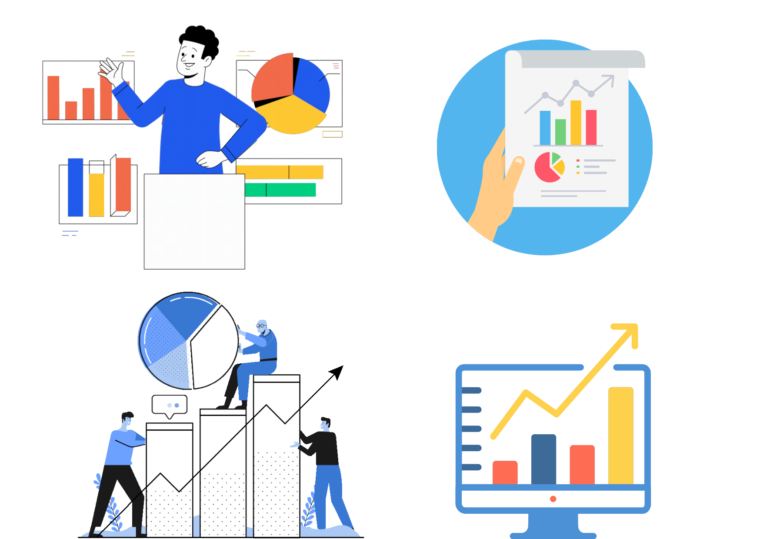
The value of visual aids in today’s data-driven study environment cannot be overlooked.
Graphs and charts are effective communication tools that enable academics to convey difficult information to their audience. These visual tools, which range from pie charts to bar graphs, can significantly improve the readability and impact of research articles.
Graphs and charts are indispensable in contemporary research, whether they are used to compare data points, depict trends and patterns, or just break up text-heavy parts.
In this article, the significance of graphs and charts in research papers will be examined, along with their benefits, types of visual aids that are frequently employed, recommended practices for their use, and typical pitfalls to avoid.
By the end of this article, you will have a comprehensive understanding of the role of graphs and charts in research, and how to use them effectively in your next paper.
If you are not well versed with charts and graphs there is a quick fix. Join online c ourses on Data visualization . This will help you learn tricks involved in representing the data in a quick way. If you are still not comfortable the hire a research consultant who will help you in representing the data in a most adorable way. I have written an article on Why Hiring a Research Consultant Can Benefit Your PhD Work? . Please refer the article for further details.
Why add Graphs and Charts to my research paper?
How graphs and charts in research papers are critical, enhance visual appeal and readability of data, convey complex information effectively, enable easy comparison of data points, facilitate understanding of trends and patterns, improved data visualization, enhanced readability, better communication of results, increased credibility, better understanding of data, choosing the right type of graph or chart, making sure the graph or chart is accurate, using clear and concise labelling, adding a title and caption, formatting the graph or chart appropriately, line graphs, scatter plots, best software options for drawing charts and graphs, how do i choose the appropriate scale for my charts and graphs, how do i handle missing data when creating charts and graphs, how to handle huge data sets using charts and graphs, when should i use logarithmic scales in my charts and graphs, how do i ensure that my charts and graphs are accessible to all audiences, including those with disabilities, whether charts and graphs come under copyright protection, what are some common mistakes to avoid when using charts and graphs in research papers, how many graphs and charts should be there in a research paper, what should be the size of graphs and charts in a research paper, can i place charts and graphs at the end of paper instead of in between text, can i place charts and graphs at the end of text as single column instead of two column text, introduction.
Graphs and charts are often used in the Results section of a research paper to visually represent data and findings obtained from experiments or analyses. They may also be included in the Discussion section to support or refute the hypotheses or research questions presented in the Introduction section.
In the Results section, graphs and charts may be used to display statistical analyses such as histograms, scatter plots, and box plots. They can also be used to show trends over time or across different groups, such as line graphs or bar charts. Tables may also be used to present numerical data in a more organized and concise manner.
I have written an article on How to write Results Section of your Research Paper . The article helps you to represent the results in a better fashion, which will in turn increase the chances of paper acceptance.
In the Discussion section, graphs and charts may be used to support the interpretation of the results and to draw conclusions. They may also be used to compare the findings of the current study to previous research or to provide visual examples of the phenomena being studied.
I have written an article on 07 Easy Steps for Writing Discussion Section of a Research Paper . This article will help you in analyzing the charts and graphs to gain better insights.
It is important to note that while graphs and charts can be useful tools in a research paper, they should be used sparingly and only when they add value to the presentation of the data. Too many or poorly designed graphs can make the paper difficult to read and understand.
In research papers, graphs and charts are used to aid in the audience’s comprehension of the material being given. Graphs and charts give the data a visual representation that is simple to comprehend, evaluate, and compare.
Researchers may successfully communicate difficult information using graphs and charts, which increases the impact and accessibility of their findings.
Data from the study are best presented using graphs and charts. They can be used to draw attention to significant patterns and trends in the data, to present information in a comprehensible manner, and to engage viewers.
Graphs and charts can assist you in clearly expressing your ideas and leaving an impact, whether you are summarising data for a research paper or presenting study findings to a big audience.
Advantages of Using Graphs and Charts in Research Papers
The use of graphs and charts in research papers offers many advantages that cannot be achieved through text alone. The following points clearly elaborate on the same.
Long passages of text can be broken up using graphs and charts, which also offer a more understandable visual depiction of the data. Additionally, they can improve the research paper’s aesthetic attractiveness, which will draw readers in and keep them reading.
When given in the form of text or raw statistics, data sets can frequently be convoluted and challenging to comprehend. This information can be made more understandable and easier to interpret for the reader by using graphs and charts. Additionally, they can be used to contrast several data sets, which makes it simpler to spot connections and trends.
Graphs and charts allow researchers to present data in a way that makes it easy to compare different data points. For example, a bar graph can be used to compare the values of different categories, while a line graph can be used to track changes over time.
Data trends and patterns that might not be immediately obvious through text alone might be found using graphs and charts. A histogram, for instance, can be used to see the distribution of data points while a scatter plot can be used to find correlations between two variables. Researchers can more easily make sense of their data by using graphs and charts to better comprehend the underlying patterns and trends.
The Benefits of Using Graphs and Charts in Research Papers
There are many benefits to using graphs and charts in research papers, including:
Graphs and charts can help researchers effectively visualize their data, making it easier for them to see patterns, trends, and relationships within their data. This can help researchers make more informed decisions and draw more accurate conclusions based on their data.
Graphs and charts can make research papers more visually appealing and easier to read. By breaking up long blocks of text, graphs and charts can help to hold the reader’s attention and make the information more engaging.
Graphs and charts can help researchers effectively communicate their results to a variety of audiences. By using visual aids, researchers can effectively convey complex data and ideas in a simple, straightforward manner.
The use of graphs and charts can help to increase the credibility of a research paper. By effectively visualizing their data, researchers can demonstrate that their findings are based on a strong understanding of the data and that their results are robust and reliable.
Graphs and charts can help researchers to better understand their data. By visualizing the data, researchers can identify patterns, relationships, and trends that might not be immediately apparent in raw data or text-based summaries.
By taking advantage of the benefits of using graphs and charts in research papers, researchers can enhance the quality and impact of their research and effectively communicate their findings to a variety of audiences.
Best Practices for Using Graphs and Charts in Research Papers
There are several best practices that researchers should follow when using graphs and charts in their research papers. These include:
It is important to choose the right type of graph or chart to effectively convey the data and results. Researchers should consider the type of data they are working with, the relationships they want to highlight, and the message they want to convey when selecting a graph or chart.
It is important to ensure that the data represented in a graph or chart is accurate and that the graph or chart is properly labelled. Researchers should also be careful to ensure that the scale used in a graph or chart is appropriate for the data being displayed.
Labels should be clear, concise, and accurately describe the data being displayed. Researchers should use labelling to highlight the key points of their data and to make it easy for the reader to understand the message being conveyed.
A title and caption should be included with each graph or chart to provide context and to summarize the key findings. The title should accurately describe the graph or chart, while the caption should provide additional information and context.
The graph or chart should be presented in a clear, uncomplicated, and readable way. In addition to making sure the graph or chart has the right size and placement within the study report, researchers should avoid utilising too many colours or patterns.
Researchers can efficiently utilise graphs and charts to increase the visual appeal and readability of their research papers as well as to properly communicate their data and results by adhering to certain best practises.
Types of Graphs and Charts Commonly used in Research Papers
There are many types of graphs and charts that can be used in research papers, each with their own strengths and uses.
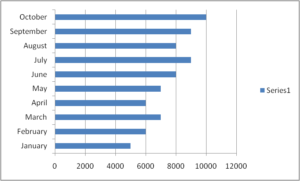
Bar graphs are used to compare the values of different categories or groups. They are best used to display data that is numerical in nature and can be represented in a structured, organized format. Bar graphs can be horizontal or vertical, and can be used to display data in a variety of ways, including grouped bar graphs, stacked bar graphs, and side-by-side bar graphs.
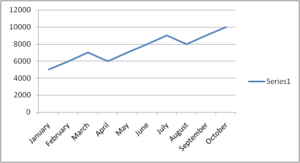
Line graphs are used to track changes over time and to display trends. They consist of a series of points connected by a line and can be used to display data in a variety of ways, including simple line graphs, multiple line graphs, and cumulative line graphs.
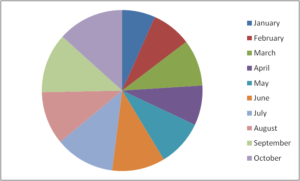
Pie charts are used to represent data as a proportion of the whole. They are best used to display data that is categorical in nature and to display the relationships between different categories.
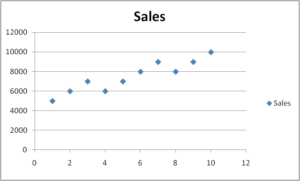
Scatter plots are used to display the relationship between two variables. They consist of a series of points plotted on a set of axes, and can be used to identify correlations between the two variables.
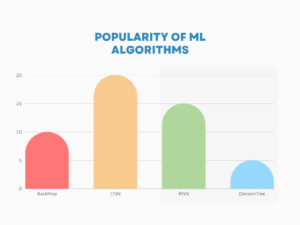
Histograms are used to display the distribution of data. They consist of a series of bars that represent the frequency of data points within a specific range. Histograms are best used to display data that is numerical in nature and to display the distribution of data points over time.
By understanding the different types of graphs and charts, researchers can choose the best visual aid to convey their data and results effectively.
There are several popular software tools for creating graphs and charts for your research paper. These tools are widely used in academia and industry for visualizing data in a visually appealing and professional manner. Here are some of the best software options:
- Microsoft Excel : Excel is a widely used spreadsheet software that comes with a robust charting feature. It allows you to create a wide variety of charts, such as bar charts, line charts, scatter plots, and more. Excel also offers customization options for colors, fonts, and styles to create visually appealing charts.
- MATLAB : MATLAB is a popular software tool used in various fields of research, including engineering, physics, and finance. It has powerful graphing capabilities, with a wide range of plotting functions and customization options. MATLAB also provides advanced data analysis and visualization features, making it suitable for complex research papers.
- R : R is a popular open-source programming language and environment for statistical computing and graphics. It offers extensive libraries for data visualization, such as ggplot2, lattice, and base graphics, which provide a wide range of charting options for creating publication-quality graphs and charts.
- Tableau : Tableau is a powerful data visualization software that provides a user-friendly interface for creating interactive and visually appealing charts and dashboards. It offers a wide range of chart types and customization options, and allows you to connect to various data sources for easy data integration and visualization.
- Adobe Illustrator : Adobe Illustrator is a vector graphics software that provides advanced drawing and design tools for creating high-quality, professional-looking graphs and charts. It offers extensive customization options for colors, fonts, styles, and shapes, allowing you to create visually stunning graphics for your research paper.
- Google Charts : Google Charts is a free web-based tool that allows you to create interactive charts and graphs. It provides a wide range of chart types, such as bar charts, line charts, pie charts, and more, with easy-to-use customization options. Google Charts also offers integration with other Google products, such as Google Sheets, making it convenient for data visualization.
Here’s a comparison of the software tools for drawing graphs and charts:
Note: The cost of these software tools may vary based on different licensing options, usage plans, and academic discounts that may be available.
It’s important to consider factors such as features, customization options, data integration capabilities, interactivity, and cost when choosing the best software for your specific research paper. Depending on your requirements and preferences, you may find one of these software tools more suitable for your needs.
These are some of the best software options for creating graphs and charts for your research paper. Choose the one that best suits your needs and familiarity with the software, and ensure that the resulting graphs and charts are visually appealing and effectively communicate your research findings.
Key factors to consider when choosing the appropriate scale for your charts and graphs, with examples and visual aids:
- Data range: Your chart or graph’s scale should correspond to the range of values in your data. For instance, a bar chart with a scale that only goes up to 1,000 will not accurately depict the full range of the data if the data extends from 0 to 100,000. In this situation, a bigger scale that can hold the entire range of values could be preferable.
- Purpose of the chart or graph: Think about the goal of your graph or chart. Use a smaller scale that zooms in on a specific area of the data if you want to draw attention to a particular trend or pattern. You could wish to zoom in on a certain time period to draw attention to a certain pattern, for instance, if your line chart of temperature trends over time shows trends over time.
- Audience: Consider the audience that your graph or chart is intended to serve. Your data visualisation may need to be more or less explicit and detailed depending on who it is intended for. If you are presenting your study to a general audience, for instance, you might want to use a straightforward bar chart, however, if you are presenting to a more technical audience, you might want to use a more intricate line chart that provides more detail.
- Data distribution: Take your data’s distribution into account. You might want to choose a different scale if your data is skewed or contains outliers in order to better depict the data. For instance, you might wish to use a logarithmic scale if your data are skewed to the right in order to more accurately depict the distribution of the data.
By considering these factors, you can choose an appropriate scale that effectively communicates the data in your chart or graph and enhances the readability and credibility of your research paper.
Handling missing data in charts and graphs can be challenging, but there are several strategies you can use to minimize its impact on the representation of your data:
- Use visual cues: When you have missing data points, you can use visual cues such as dots or a different colour or pattern to indicate the missing information. This helps the reader understand that the data is missing and avoids misleading them with false information.
- Interpolate: In some cases, you may be able to estimate the missing data by interpolating values between two known data points. This can be useful for creating a continuous line chart or graph, but it should be clearly labelled as estimated data.
- Use statistical methods: Statistical methods, such as imputation, can be used to fill in missing data based on patterns in the existing data. This should be done carefully and with caution, as it can introduce bias into the data if not done correctly.
- Leave it out: If the amount of missing data is significant, it may be best to simply exclude it from your charts and graphs. This will avoid giving false impressions of trends or patterns in the data.
- Provide a separate graph or chart: If the missing data is important, you can provide a separate chart or graph that specifically shows the missing data. This allows the reader to see the complete picture, and understand the limitations of the data you are presenting.
When handling missing data, it’s important to be transparent about the methods you used and to clearly label any estimated or imputed data. This will help to ensure the accuracy and reliability of your research paper, and to build trust with your readers.
Handling huge data in charts can be a challenge, but there are several strategies that can help make the data more manageable and easier to understand. Here are some tips for handling huge data in charts:
- Use aggregated data: Aggregating data into categories or grouping similar data points can help reduce the amount of data being displayed and make it easier to understand.
- Filter data: Filtering data to only display relevant information can also help reduce the amount of data in a chart.
- Use multiple charts: If the data is too large to be displayed effectively in a single chart, consider using multiple charts to break down the data into smaller, more manageable parts.
- Use dynamic charts: Dynamic charts, such as interactive line charts or bar charts, allow users to select and view specific data points, making it easier to understand large amounts of data.
- Use colour coding: Color coding data points in a chart can help distinguish between different data sets and make it easier to see trends or patterns.
- Use a smaller time scale: If the data is time-based, consider using a smaller time scale, such as days or weeks instead of months or years, to reduce the amount of data in a chart.
- Use data visualizations: Data visualizations, such as heat maps or treemaps, can help represent large amounts of data in a more manageable and easy-to-understand format.
- Use summary statistics: Summary statistics, such as mean, median, or mode, can help simplify the data and make it easier to understand.
- Use simplifying shapes: Using simplifying shapes, such as circles or squares, can help represent large amounts of data in a way that is easy to understand.
- Consider a combination of methods: Using a combination of the methods above can help effectively handle huge data in charts and make it easier for audiences to understand.
By using these strategies, you can effectively handle huge data in charts and ensure that your data is represented in a clear and concise manner.
A logarithmic scale is a type of scale used in charts and graphs to represent a large range of values in a compact and readable manner. Unlike a linear scale, which represents equal increments of a variable with equal distances, a logarithmic scale represents equal increments of the variable as equal percentages.
The logarithmic scale is particularly useful when dealing with data sets that have an extensive range of values. For example, if a data set has values that range from 1 to 1,000,000, a linear scale would require a very long axis to accommodate all of the values, making it difficult to read and understand. On a logarithmic scale, the axis would be compressed, making it easier to see the trends and patterns in the data.
In research papers, the use of a logarithmic scale can be particularly helpful when dealing with data sets that have a skewed distribution, such as data that has a few extremely large values and many smaller values. By using a logarithmic scale, researchers can better represent the distribution of the data and highlight the trends and patterns that may not be apparent on a linear scale.
It’s important to note that when using a logarithmic scale, the values on the axis are logarithms, not actual values. This means that the increments on the axis represent multiplicative factors, not additive factors. When interpreting a chart with a logarithmic scale, it’s important to consider the scale and understand that the values are represented differently than on a linear scale.
In conclusion, the use of a logarithmic scale can be a powerful tool for researchers when dealing with data sets that have a large range of values. By compressing the axis and representing equal increments of the variable as equal percentages, logarithmic scales can help make data easier to understand and highlight important trends and patterns.
Let’s consider the number of confirmed COVID-19 cases in a country for 10 days. Here is a table representing the data:
As you can see, the logarithmic scale makes it easier to see the relative changes in the number of cases, especially as the values get larger. On a logarithmic scale, equal increments of the number of cases represent equal percentages, rather than equal distances. This allows you to see changes that might not be as noticeable on a linear scale.
To calculate the values for the logarithmic scale, you would take the logarithm (base 10) of each value in the data. Here is an example of how to calculate the logarithm of the value for the 5th day (800 cases):
code log10(800) = 2.903
This means that on a logarithmic scale, the value for the 5th day would be represented as 2.903.
To ensure that your charts and graphs are accessible to all audiences, including those with disabilities, consider the following:
- Use clear and simple language: Use plain language and avoid technical terms when labelling your charts and graphs, to make it easier for everyone to understand the data.
- Provide alternative text: Provide alternative text descriptions for images, including charts and graphs, so that screen readers can describe the content to users with visual impairments.
- Use accessible colours: Avoid using colour as the only means of conveying information, and ensure that the colour contrast between the text and background is high enough to be easily readable by people with colour vision deficiencies.
- Use clear and concise labels: Label the axes and data points clearly and concisely, and include units of measurement where appropriate.
- Use accessible file formats: Save charts and graphs in accessible file formats, such as PDF or SVG, which can be easily read by assistive technology.
- Consider touch and keyboard navigation: Make sure that your charts and graphs are usable for people who navigate the web using touch or keyboard controls, by ensuring that all interactive elements can be operated using keyboard commands.
- Test for accessibility: Test your charts and graphs with assistive technology, such as screen readers, to ensure that they are fully accessible to all users.
By following these guidelines, you can ensure that your charts and graphs are accessible to everyone, regardless of their abilities. This will help to increase the reach and impact of your research paper, and promote greater inclusivity in the scientific community.
It is easier for readers to comprehend complex material when it is presented visually through charts and graphs. It’s crucial to think about whether the charts and graphs you create for a research paper are subject to copyright laws and whether you require permission to use them.
Original works of authorship, such as literary, musical, theatrical, and aesthetic works, are protected by copyright law. If they are made by a person or group and have enough creative expression, charts and graphs might be regarded as original works of authorship.
Research articles frequently utilise charts and graphs that are based on publicly accessible data, such as statistics from the government or data from surveys.
These kinds of information are typically regarded as being in the public domain and can be utilised without a licence.
Charts and graphs produced by an individual or group, however, and containing a considerable amount of original creative work may be protected by copyright legislation.
In certain situations, you might need to ask the copyright holder for permission before using the graph or chart in your research report.
When using charts and graphs in a research paper, it’s important to consider the source of the data and whether the chart or graph is protected by copyright law. If you are unsure, it’s always best to err on the side of caution and to obtain permission from the copyright owner before using the chart or graph in your research paper.
When using charts and graphs in research papers, it’s important to avoid common mistakes that can undermine the effectiveness of your data visualization. Here are some common mistakes to watch out for:
- Overcomplicating the visualization: Avoid using too many colours, patterns, or elements in your chart or graph, as this can make it difficult for the reader to understand the data. Stick to simple, clean designs that emphasize the data.
- Ignoring the scale: Be careful when choosing the scale for your chart or graph, as the wrong scale can distort the data and give a false impression of the data.
- Improper labelling: Make sure to label the axes of your chart or graph clearly and accurately, and include units of measurement where appropriate.
- Not using appropriate chart or graph types: Choosing the right chart or graph type is important for effectively communicating the data. For example, if you have categorical data, use a bar chart, not a line chart.
- Ignoring the data distribution: Consider the distribution of your data, and adjust the scale and chart type accordingly. For example, if your data is skewed, you may want to use a logarithmic scale to better represent the data.
- Overloading the chart or graph: Avoid putting too much data into a single chart or graph, as this can make it difficult for the reader to understand the data. Instead, break the data down into multiple charts or graphs as needed.
- Using outdated or irrelevant data: Make sure to use the most up-to-date and relevant data in your charts and graphs, as outdated or irrelevant data can undermine the credibility of your research paper.
By avoiding these common mistakes, you can ensure that your charts and graphs effectively communicate the data.
In conclusion, charts and graphs play a crucial role in visualizing and communicating data in research papers. The use of charts and graphs allows researchers to convey information effectively and efficiently, helping the reader to understand complex data easily. Whether it’s a bar graph, scatter plot, heatmap, or histogram, each type of chart has its unique strengths and weaknesses.
Choosing the right type of chart and using it effectively is crucial to getting your message across in a research paper. Additionally, using a logarithmic scale and ensuring accessibility to all audiences can make your charts and graphs more effective and user-friendly. To make the most of charts and graphs in research, it is important to keep in mind the guidelines, best practices, and common mistakes to avoid.
Frequently Asked Questions
The number of graphs and charts in a research paper can vary depending on the nature of the research, the specific requirements of the paper, and the preferences of the author or the guidelines of the target journal or conference. There is no fixed rule or standard for the exact number of graphs and charts in a research paper. However, it is generally recommended to use graphs and charts judiciously, ensuring that they are relevant, clear, and effectively convey the research findings.
The size of graphs and charts in a research paper should be chosen carefully to ensure that they are clear, readable, and effectively convey the information to the readers. Here are some general guidelines for the size of graphs and charts in a research paper: Legibility: The graphs and charts should be large enough to be easily read and interpreted by the readers, even when printed or displayed at a reduced size. The font size of labels, legends, and annotations should be legible, typically ranging from 10-12 points, depending on the font type. Proportionality: The size of the graphs and charts should be proportional to the available space in the paper and the content being presented. Avoid using excessively small graphs or charts that may be difficult to understand or interpret. Clarity: The graphs and charts should be clear and not overly cluttered. Use appropriate line thicknesses, marker sizes, and bar widths that are visually clear and distinguishable. Avoid overcrowding the graphs or charts with too much information, which may make them difficult to read or interpret. Journal/Conference Guidelines: Follow the guidelines of the target journal or conference for the size of graphs and charts. Some journals or conferences may have specific requirements or recommendations for the size of visuals in research papers. Consistency: Ensure that the size of graphs and charts is consistent throughout the paper. Use a consistent style for fonts, colors, and other graphical elements to maintain a cohesive visual appearance. Accessibility: Consider accessibility requirements, such as ensuring that the size of graphs and charts is suitable for readers with visual impairments. Providing alternative text descriptions for visuals can also enhance accessibility.
Yes, it is common practice in research papers to place charts and graphs at the end of the paper as appendices or as separate sections, especially if they are large or numerous. This can help improve the flow and readability of the main text, as readers can refer to the visuals in the appendices or separate sections as needed without interrupting their reading of the main content.
Yes, you can place charts and graphs at the end of a research paper as single-column visuals, even if the main text is formatted in two columns. However, it’s important to ensure that the placement of visuals at the end of the paper does not disrupt the overall organization and readability of your research paper.
Upcoming Events
- Visit the Upcoming International Conferences at Exotic Travel Destinations with Travel Plan
- Visit for Research Internships Worldwide

Recent Posts
Copyright © 2024 Research Voyage
Design by ThemesDNA.com

- + 1 321 - 251 - 6977
- Book Editing Services
- Fiction Editing
- nonfiction editing
- Authors Here
- Dissertation
- Universities & Institutions
- Academics Here
- Journals and Scientific PUBLICATIONS
- Academic Editing
- Scientific Manuscript
- Subject Matter Experts
- Researchers Here
- Business Editing
- Compare Editing Services
- Executives Here
- Consultation
- Editorial Critique Services
- Publishing Here
- Instant Price Quotes
- Coupons and Discounts
- Free Editing Sample & Critique
- Your Editing Team
- CERTIFIED Story Editors
- PhD & Subject Matter Experts
- About First Editing
- March 31, 2023
How to Properly Use Tables and Graphs in Research
- By Max Dade


Introduction to the Use of Tables and Graphs in Research
In the world of academia, you will inevitably encounter situations where you need to present data in a clear and concise manner. One of the best ways to achieve this is through tables and graphs, which can be used to present complex information in a simple and easily understandable format. However, it is essential to know how to use them effectively to avoid misrepresenting your data or confusing your readers. This article shows you how to properly use tables and graphs in academic research.
Types of Data
You should consider the type of data (categorical or numerical) when deciding whether to use a table or a graph.
Categorical data includes variables that fall into distinct categories, such as gender, occupation, or marital status. Tables are the most effective way to present categorical data as you can list the categories in rows or columns.
Numerical data is data that is measured or counted, such as age, height, or income. Tables and graphs can both be used to present numerical data, with graphs more commonly used to highlight the relationships between the data, while tables are used to present the actual values in a clearer way.
When to Use Tables
Tables are most effective when presenting categorical data or when presenting multiple numerical data points. Use tables when you want to:
- Present a large amount of data.
- Compare data side by side.
- Provide precise numerical values, which are particularly useful when presenting scientific or technical data.
When to Use Graphs
Graphs are most effective when presenting numerical data as they help to illustrate the relationships between the data points. Graphs should be used when you want to:
- Show trends: Graphs are ideal for showing trends or patterns in the data.
- Compare data: Graphs can be used to compare data points visually.
- Highlight differences: Graphs make it easy to highlight differences between data points.
Types of Graphs
Several types of graphs can be used to present numerical data effectively. The choice of the graph depends on the nature of the data and the research question. Here are some of the main types of graphs employed in articles, theses, and dissertations:
1. Line Graphs: Line graphs are used to show trends over time. They are ideal for showing changes in data over time or illustrating relationships between two variables.
2. Bar Graphs: Bar graphs are used to compare data across categories. They are effective at presenting specific categories of data to highlight the differences between them.
3. Pie Charts: Pie charts are used to show the proportion of data in each category. They are often used to illustrate how different categories contribute to the whole.
4. Scatter Plots: Scatter plots are used to show the relationship between two variables to show how changes in one variable affect another.
5. Histograms: Histograms are used to show the distribution of data. They are effective at illustrating how data is clustered around certain values.
Here’s a simple table summarizing these types of graphs:

Best Practices for Tables and Graphs
Here are some noteworthy best practices to present your data in a clearly and appropriately.
- Keep it simple: Avoid cluttering your tables and graphs with unnecessary information. Only include data that is relevant to your research question.
- Label everything: Ensure that all tables and graphs are properly labeled with descriptive titles and axis labels.
- Use clear and concise language: Use simple and direct language to explain your data. Avoid using overly complex terminology or jargon that your readers may not understand.
- Choose the right format: Choose the format that best suits your data. Use tables for presenting categorical data and graphs for presenting numerical data.
- Use colors and fonts: Use colors and fonts that are easy to read and visually appealing. Too many colors can be distracting for the reader.
- Use consistent formatting to make sure your readers can understand and compare the data.
- Use appropriate statistical analysis: While you can use graphs to show trends, statistical analysis can help to further analyze the data and draw meaningful conclusions.
- Consider the audience: If your audience is technical or scientific, they may prefer tables that provide precise numerical values. However, a general audience may find graphs more visually appealing and easier to understand.
- Choose the right software: There are many software programs available to create tables and graphs, such as Excel, SPSS, and R. It is important to choose the best software for the task to present your data clearly.
- Use consistent formatting: Consistent formatting implies that the same font, font size, and spacing are consistent throughout the document. It is also important to use the same formatting for similar data points to make it easier for readers to compare the data.
Tables and graphs are essential tools for presenting data in a clear and concise manner. As a master’s degree or Ph.D. student, you will need to use tables and graphs in your research to effectively communicate your findings. Remember to keep your graphs and tables simple, label everything, use clear and concise language, choose the right format, and use appropriate colors and fonts.
- Frequently Asked Questions
Share With :

Author Services
- Nonfiction Editing
- Copy Editing
- Content Editing
- Line Editing Services
- Proofreading Services
- Additional Editing Services
- Editing Consultation
- Business Copy Editing Services
Academic & Scientific Researchers
- Academic English Editing
- Scientific Research Editing
- Technical Copy Editing
- Universities & Institutions
- Thesis Editing
- Dissertation Editing
- How to Cite White Papers
Editing Help
- Editing Service Price Quote
- Client Login
- Satisfaction Guarantee
- Terms of Service
- Return Policy
- Privacy Policy
- Cookies Policy
Writer Resources
- Samples of Editing Levels
- PODCAST – Publishing Power!
- BLOG for Writers
- Writing Tools
- Coupons & Special Offers
About FirstEditing
- CERTIFIED Structural Editors
- Published Authors
- Customer Reviews
- Professional Editors
- Affiliate Program
- Partner with First Editing
- Refer a Friend
- Editing Jobs
- Guest Blogging

Publications

© 1994-2024 FirstEditing.Com, Inc. – Providing Proofreading & Editing Services Worldwide
COUPON QUIZ Which countries celebrate Christmas on Dec 24th?
Get 15% Off Now Expires December 25
Add Your Heading Text Here
Lorem ipsum dolor sit amet, consectetur adipiscing elit. Ut elit tellus, luctus nec ullamcorper mattis, pulvinar dapibus leo.

- Conferences
- Editorial Process
- Recent Advances
- Sustainability
- Academic Resources

Why Figures Are Important In Academic Research
Figures are highly important components of academic research. They attract readers to your research and allow them to visualise difficult concepts much quicker than through textual information.
In this article, we take a look at why figures are important in academic research and how to use them effectively, as well as the impact of figure editing services.
Why are figures important?
Figures convey lots of complicated data in a digestible format. They significantly benefit scientific research in several ways.
1. Ease of understanding
Reading complicated academic material can feel daunting, especially for someone who isn’t a researcher in the field. Figures compress complex information into an easy-to-understand visual aid.
Instead of poring over paragraphs of abstract concepts, which could yield many different interpretations from author to author, figures simplify the information into an unambiguous graphic. This leaves much less room for misinterpretation and acts as a point of reference for readers—it supplements the textual information and ensures faster comprehension.
2. Engage and attract readers
Many readers will skim through the main sections of a paper before deciding if they will read it in full. In addition to the abstract, introduction, and conclusion, clear and visually appealing figures could attract readers and convince them to take the time to understand your work.
Simplifying the most important results or concepts provides a framework that the reader can refer to throughout. If they can understand your figures, they are much more likely to engage with the rest of your research. This means that your work is more accessible to the general public and also encourages more multidisciplinary collaboration.
3. Convey professionalism and authority
Well-designed, comprehensible figures also show that you’ve taken care in the communication of your research. This not only makes your work look more professional, but it also makes the reader place more trust in you as a researcher.
Taking the time to ensure that the visual elements of your research are as clear and straightforward as possible shows the audience that you care about their understanding. And it thus follows that your research is important and deserves to be understood by a wide audience.
When should you use figures?
Many journals have a limit on the number of figures that can be featured in a paper. It is thus of the utmost importance that you make sure that you use them judiciously.
Figures should be reserved for your most significant findings or the concepts that are the most difficult to visualise or comprehend. You should always ask yourself: Can I explain this easily in text or not? If the answer is no, and it would take more than a couple of lines or a paragraph of text, then a figure will likely benefit the paper.
They should also not be used to introduce new information; they should be used as a visual aid to back up arguments or clearly display data. They add value by further clarifying areas of your research and ensuring accuracy of interpretation.
In short, a figure’s purpose must be clear: Does it actually help to support your points? Is it a representation of something that is fundamentally important for understanding your work? Does it clearly and unambiguously showcase the relevant data or arguments?
If you can answer these comfortably, then it is likely that the figure adds value to your research.
Benefits of figure editing
Many authors use figure editing services to help them communicate their findings. This benefits them in a number of ways.
1. Saves time
The most obvious benefit, perhaps, of choosing to use figure editing services is that you can spend the time you would otherwise be spending refining your figures on other areas of your research.
The process of publishing a paper can be long and arduous; professional figure editing gives you more room to accomplish other tasks and manage your workload more easily.
2. Compliance with guidelines
As well as saving time, figure editing also offers peace of mind with regard to complying with publication standards and conventions. Using this service guarantees that your figures will meet the criteria for the journal you’re publishing in, thus preventing any chance of your paper being sent back by editorial staff for not meeting the layout criteria.
3. Clear presentation
As mentioned before, ensuring your figures are clear and unambiguous lends your work a high level of professionalism. This improves the impact and potentially the reach of your work, as it will look more authoritative to a reader and be easier to comprehend.
Should I opt for figure editing?
On the whole, figure editing is beneficial to all authors and researchers. It helps reduce stress during your publication journey and also ensures that your research looks its absolute best upon publication. This improves the visual impact of your work and helps ensure that your research is understood and perceived positively by a wide audience.

MDPI Author Services now offers figure editing services to researchers who want to improve the visual impact of their research. We produce publication-ready figures that clearly communicate your research to readers. Completed in one business day from payment.
Get a free quote at the link above.
Related posts

Open Science , Interviews , Open Access
How MDPI/Open Access Supports Societies

Open Science , Academic Resources
Understanding Publication Ethics

Open Science
Celebrating Advances in Pharmaceutical Sciences

How To Find The Right Journal For Your Research

Using Recycled Silk can Help Combat Pollution in Waterways

Insights from MDPI Top Picks: November 2024

Open Access , Open Science
Why CC BY Is the Best License for Open Access

How does our gut health affect our mental health?

Exploring AI for Skin Diagnostics

Sustainability , Open Science
World Soil Day 2024: Measure, Monitor, Manage
Add comment cancel reply.
Save my name, email, and website in this browser for the next time I comment.
Privacy Preference Center
Privacy preferences.
From sharing the latest MDPI blog news, to showcasing our most popular articles, the newsletters will keep you in the loop with everything good going on in the science world.

IMAGES
COMMENTS
Mar 25, 2024 · They are designed to complement the text by presenting information in an easily digestible and visually appealing format. Common types of figures include charts, graphs, photographs, illustrations, and flowcharts. Examples of Figures in Research Paper. Examples of Figures in Research Papers or Thesis are as follows: Line graphs Example
If the data shows pronounced trends or reveals relations between variables, a graph should be used. If the data doesn't show any significant trend in the evidence, a graph is not the figure of choice. 1. Although there are myriad computer programs that can generate a graph, the author must still heed some basic principles.
Feb 5, 2023 · Best Practices for Using Graphs and Charts in Research Papers. There are several best practices that researchers should follow when using graphs and charts in their research papers. These include: Choosing the Right Type of Graph or Chart. It is important to choose the right type of graph or chart to effectively convey the data and results.
Aug 14, 2014 · Figure and table numbers end with a period or colon like “Figure 3.” Or “Figure 3:”. Figures and tables are numbered consecutively throughout the thesis but independent from each other. Figure and table numbers can be in sequential order like “Figure 3.” or in chapter order like “Figure 1.3.”, but consistent throughout the thesis.
Nov 4, 2013 · Several studies, journal guidelines, and discourses on scientific writing 1-10 affirm the critical role that tables, figures, and graphs (or display items) play in enhancing the quality of manuscripts. Scientific tables and graphs can be utilized to represent sizeable numerical or statistical data in a time- and space-effective manner. Readers ...
Mar 31, 2023 · Several types of graphs can be used to present numerical data effectively. The choice of the graph depends on the nature of the data and the research question. Here are some of the main types of graphs employed in articles, theses, and dissertations: 1. Line Graphs: Line graphs are used to show trends over time. They are ideal for showing ...
Figures. Figures come in two types: graphs and images/diagrams. Graphs are typically used to present your data in a form that is easy for the reader to understand. Images and diagrams are more likely to be used to help explain concepts or theories. It is important to realise that figures do not act as a replacement for text.
May 23, 2024 · Figures are highly important components of academic research. They attract readers to your research and allow them to visualise difficult concepts much quicker than through textual information. In this article, we take a look at why figures are important in academic research and how to use them effectively, as well as the impact of figure ...
Mar 1, 2012 · The way that data are presented can affect how accurately they will be interpreted. 9 Certain types of graphs, figures, or tables can be matched to the data at hand. 2, 4, 5, 7, 8, 10, 12 Tables, for instance, should be used when exact values are important, but graphs are better at depicting complex relationships. 7 As Cooper and Schriger 2 ...
rows; figures include all other graphic representations, e.g. graphs, pie charts, diagrams, maps, photographs. Here are some tips for using tables and figures in your writing, followed by an annotated example of each. There may be variations between disciplines or personal choices (e.g. in numbering styles), so please look at